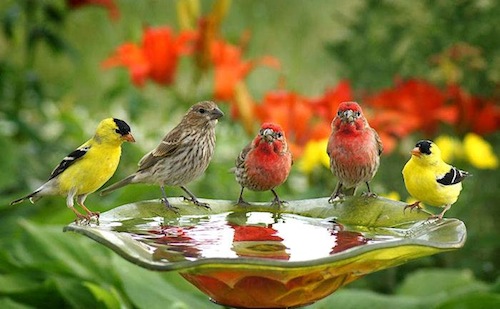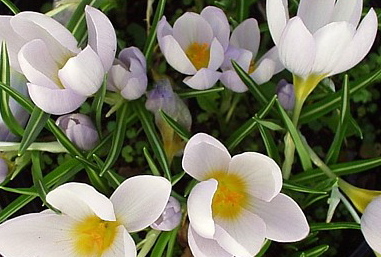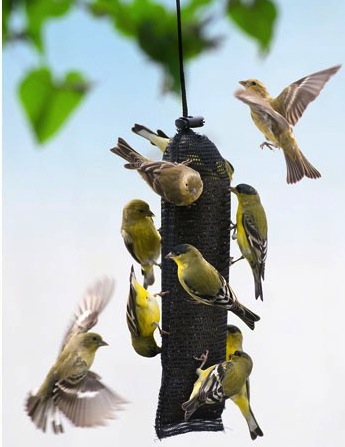-
Why Place Finch Feeders Near a Bird Bath?
Photo courtesy of Evolve Campaigns Fresh water is known to entice more feathered friends than any single feeder or birdhouse. One of the critical elements for just about any life form, birds require fresh water, even in the harshest winter weather. Sure they can eat snow, but it takes work to convert the snow into water and uses precious calories needed to stay warm. That’s why heated baths and de-icers are so popular among dedicated backyard birders-especially this past winter, no… make that this persistent winter!
With the first bulbs forcing through, it
means spring’s around the corner… even if there’s still snow on the ground in your neck of the woods! The calendar and number of hours of daylight are signaling birds it’s time for nesting, to claim a spot, settle down and raise their broods. Although American goldfinches and house finches don’t use natural cavities (or birdhouses) for nesting, you can absolutely attract these cool little fliers to your place with finch feeders and a fresh water source.
Goldfinches can be seen chowing down on straight nyjer or thistle seed (their preferred meal), as well as finch mixes containing finely chopped sunflower hearts and thistle. The latter being more likely to attract a wider variety of species. House and purple finches, cardinals, pine siskins, towhees and several types of sparrows are commonly seen visiting finch feeders.
The timid demeanor of the vibrant yellow goldfinch keeps them from competing at feeders among crowds. They’d actually prefer to just give up and fly off than to fight for a chance to eat. This not very characteristic of too many birds!
A great way to offer extra feeding space during the busy finch season (without buying several full-blown feeders) is to offer thistle socks. Convenient and inexpensive, these smaller mesh feeders provide several birds a good meal instead of a missed opportunity!
One of very few birds who molts twice per year, their electric yellow breeding plumage has started developing. When all other birds are just about through with nesting for the season, goldfinches are just getting started! Their busy season? Late June through July.
Though they might not be sporting that amazing yellow color, goldfinches are still around. Keep thistle and finch feeders out year-round for best results, to see more of these delightful feathered friends at your place!
-
Want more birds at your nyjer feeder?
There are no set rules in wild bird feeding, we offer birds different varieties of food that entice them and keep them coming back. Of course habitat plays a huge role, with places for shelter and nesting like mature trees, thickets and shrubs. The all important water source is also a big factor for attracting feathered friends.
Just because finches eat thistle, or nyjer seed, doesn’t mean they wont’ frequent other feeders offering different seed mixes. For the last few days, I’ve been seeing Black Capped Chickadees at the nyjer feeder. Now maybe it’s just the time of year, but I’ve never seen them at this feeder before. Also, the juvenile Eastern Bluebirds, who will eat suet during our cold winter months, have already started feeding at the suet feeder too.
A favorite treat for several birds is to mix thistle seed with finely chopped sunflower hearts. Placing this seed mix in the nyjer feeder attracts Juncos, Pine Siskins, Towhees and House and Purple Finches, as well as the Goldfinch.
In early spring, try offering nesting materials and encourage birds to take up residence by nesting in your yard. Collect dryer lint, pet hair, cotton yarns and fibers, and decorative mosses to create a nest ball with variety of materials that birds prefer. You can place them in a standard suet cage, or mesh produce bag from the grocery store. Of course commercial materials are available, and even some cool holders to accommodate them.
Just because the bright yellow feathers disappear in fall, it doesn’t mean these birds are gone. Remember to keep nyjer feeders out year round with fresh seed, as goldfinches and others will stick around during during winter months.




